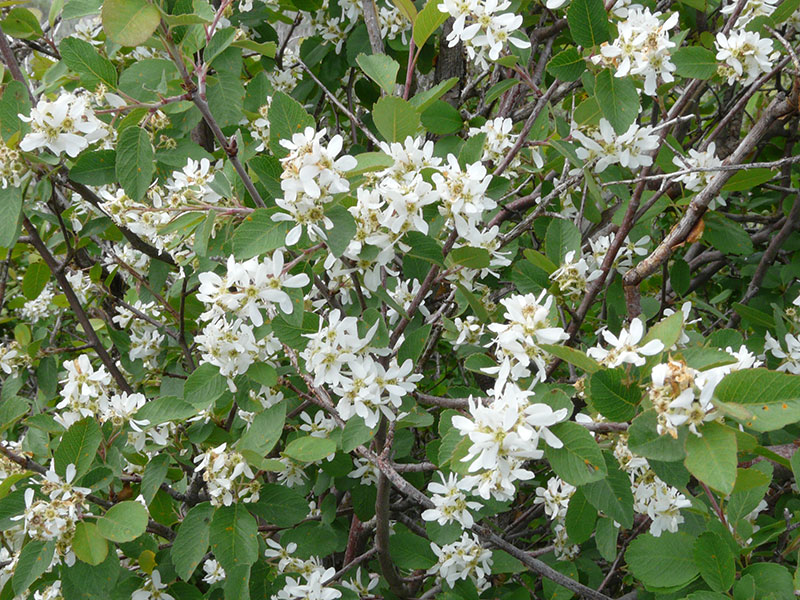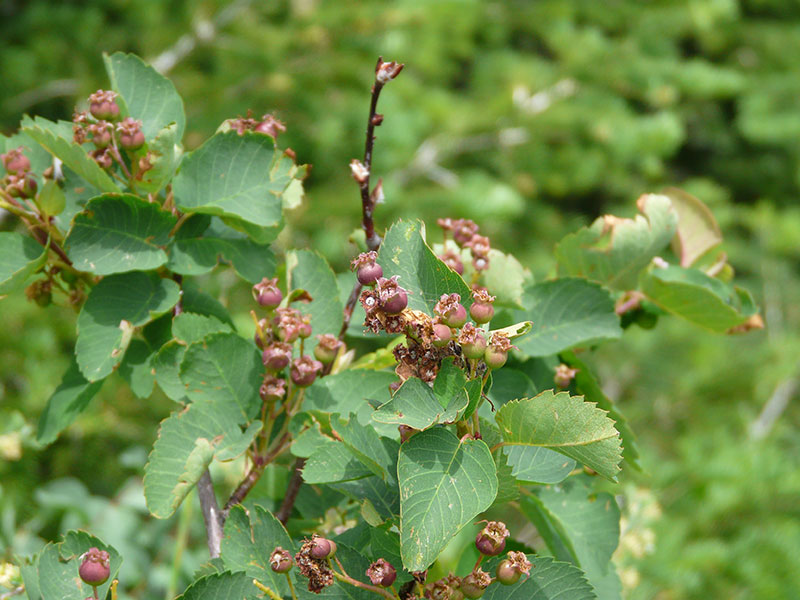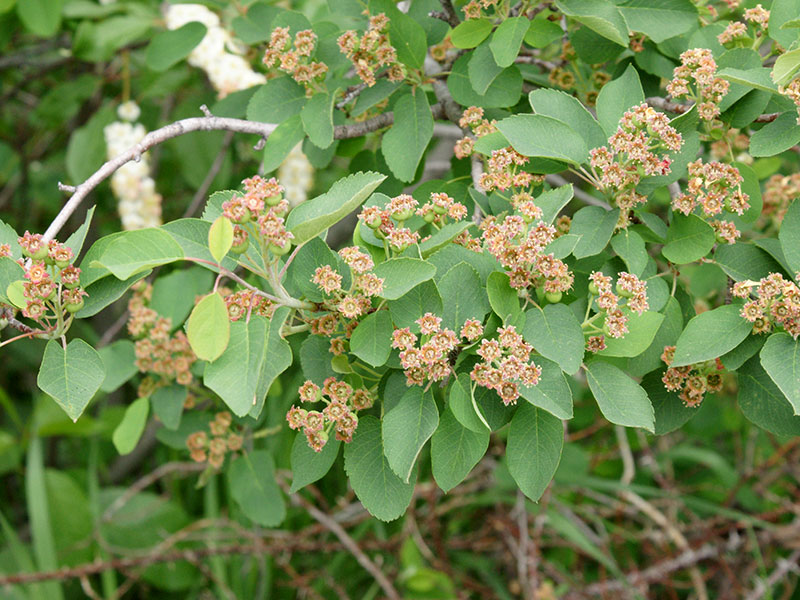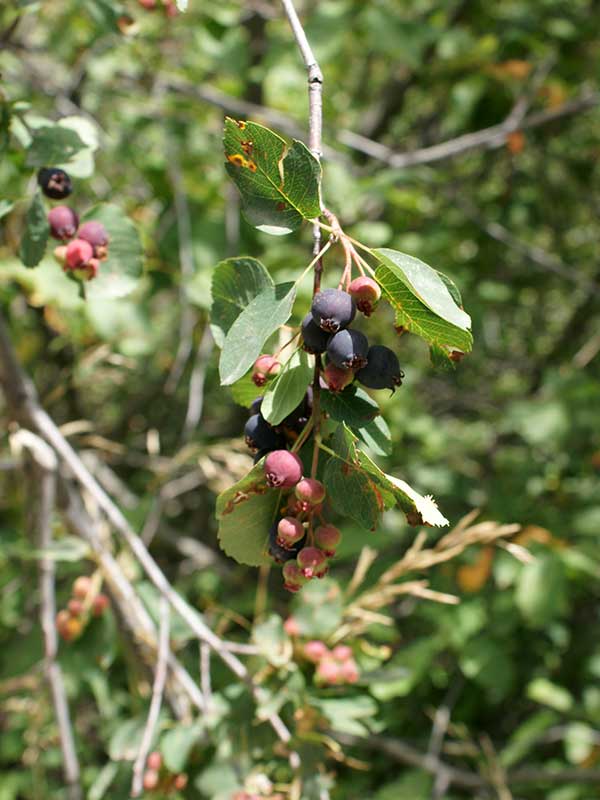Amelanchier alnifolia / serviceberry
- erect shrub (3-18 ft), common in the Valley
- usually several trunks
- compact, fragrant white flower clusters
- star-like flowers
- smallish, light-green, oval leaves
- small, edible blue “berries” by July
- red/orange fall leaf color
Also known as: saskatoon serviceberry, Pacific serviceberry, western serviceberry, alder-leaf shadbush, dwarf shadbush, chuckley pear, western Juneberry
Serviceberries are usually multi-stemmed shrubs that bloom in the early spring. The individual white flowers have, in my mind, rather feathery petals, but these are a bit hard to see at first glance because they grow in frilly-looking clumps. And they smell good.
The leaves and fruits are also “diagnostic”. The leaves are thin and round-ish, and have entire (not toothed) margins at the base but teeth along the distal margins (tips). The fruit are about the size of a blueberry and quite tasty. In 2019, most of these either got frozen out or the birds ate them before I could get there.
Obviously, with a bird-eaten fruit and bird-dispersed seed, serviceberry can propagate by seed, but it also spreads by root suckers and layering. If you want one in your garden, it is easy to get at and plant these.
The name “serviceberry” apparently comes from the similarity of the fruit to the related mountain ash, Sorbus (sorbus-berry). On the other hand, the name is sometimes pronounced “sarvis”, and when I first learned about these in North Carolina, I was told that this derived from the facts that (1) it was one of the first flowers blooming in the spring, and (2) it was used during “emergency” wedding sarvises. Alternately, according to the southwest Colorado wildflower site, the name comes from the flowers being used in funeral services when those who died in the winter could finally be buried.
The alternate name, Juneberry, comes from the fact that in some places, the fruit (technically a pome, like an apple or pear, and not a berry), ripens in June. Or… shadbush because it ripens when the Atlantic shad fish run happens. Neither of these is really true in the Valley.
| Color | |
|---|---|
| Family | |
| Blossom size | |
| Inflorescence size | |
| Inflorescence type | |
| When? | |
| Where? |




